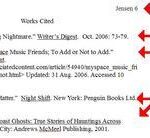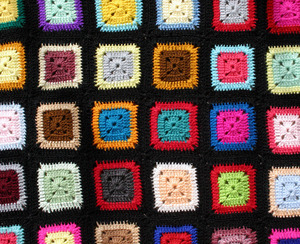MLA stands for Modern Language Association. APA stands for American Psychological Association. Both of these organizations have developed a style to aid in the formation of papers. Both styles provide guidelines for the mechanics of writing, including aspects of punctuation, quotation, and the documentation of sources. A person’s profession or major affects the style used. For example, a Psychology student would use the APA style in writing his/her papers. A Biology student, however, would use the MLA style for his/her papers. Both of these styles contain many similarities as well as many differences. One similarity is the margins. All of the margins with both styles are 1″.
One of the differences between the two styles involves citing references within the document. A citation is the quoting or paraphrasing of the ideas coming from someone else. This process is also known as parenthetical citation. The MLA style requires the writer, in an internal citation, to place the author’s last name and page number of the reference in parenthesis. The APA style requires a different format. It requires the writer to place the author’s last name, date of publication, and the page number of the reference in parenthesis.
Another difference between the MLA and APA styles occurs when citing information found on the World Wide Web. Citing information from the WWW is very important to know because so much useful information is found on the Web. The MLA style requires the writer to include the author’s last name, first name, and title of the document. Then the title of the complete work, version or file number, document date or date of last revision, protocol and address, and access path or directions are found.
The APA style requires a somewhat different format. The APA style requires the writer to include the author’s last name, initial(s), date of document, title of document, title of complete work, version or file number, edition or revision number, protocol, address, and access path or directories. Both of these styles are very similar. However, they contain enough difference to cause confusion by students writing papers.
MLA
APA
In Text References
Includes the author’s last name and page number of the reference.
Includes the author’s last name, the date of publication, and the page number of the reference.
Citing Sources From the WWW
Author’s Last Name
Author’s First Name
Title of Document
Title of Complete Work
Version or File Number
Document date or date of last revision
Protocol and address
Access path or directories
Author’s Last Name
Author’s Initial(s)
Date of Document
Title of Document
Title of Complete Work
Version or File Number
Edition or Revision Number
Protocol and address
Access path or directories
Quotations
Short quotations, fewer than 4 complete lines, are in the text enclosed by quotation marks. Longer quotes are double indented, single spaced, and only use quotation marks used by the author.
Short quotations, fewer than 40 words, are in the text enclosed by quotation marks. Long quotations of 40 or more words are displayed in a double-spaced block of typewritten lines with no quotation marks. It is indented five spaces from the left margin.
First Page Format
Last Name and Page Number
Student’s Full Name
Professor’s Name
Department and Course Number
The date that the paper is given to the professor
Short Title Page #
Title
Student’s Full Name
Institutional Affiliation
(If there is no institution, the city and state or the city and country of the author should be used.)
Title Page?
No
Yes
Each style has a different format for the title page of the paper. The MLA style requires a special format for the first page of the paper, however, it does not require a separate title page. At the top of the first page, at the left-hand margin, the student’s name is found. Then the instructor’s name, the course name and number, and the date is found. These items are all found on separate, double-spaced lines. Then the paper is double-spaced and the title is centered above the text of the paper. The APA style does require a separate title page. It should have the title of the paper centered on the page, with the short title and page at the top right. The student’s name is one double-space below the title. The institutional affiliation appears one double-space below student name. However, if there is no institutional affiliation, the city and state or city and country of the author should be used.
Another difference occurs with quotation marks. The MLA style prefers the writer, with longer quotes, longer than 4 lines, to have lines that are double indented, single spaces, and only use quotation marks used by the author. The APA style, in long quotations of 40 or more words, is to be displayed in a double-spaced block of typewritten lines with no quotation marks. It is indented five spaces from the left margin.
Both styles of writing provide writers with a guideline for the format and layout of the paper. Both styles have several similarities, including the size of all margins, 1″. Each style also has its own unique features. These differences include internal citations, citing sources found on the WWW, quotations, title pages, and the format of the first page.
Works Cited
Dewey, Russ. A Publication Manual Crib Sheet.” 1996.
http://www.wooster.edu/psychology/ap’a-crib.html (10 Oct, 2000).
Jones, Tod E. “MLA Style and Documentation. 2000.
http://www.psychwww.com/index.html (10 October, 2000)
Taylor, Todd and Janice Walker. “The Elements of Citation.” Basic CGOS Style.
http://www.columbia.edu/cu/cup/cgos/idx_basic.html (10 Oct, 2000)



